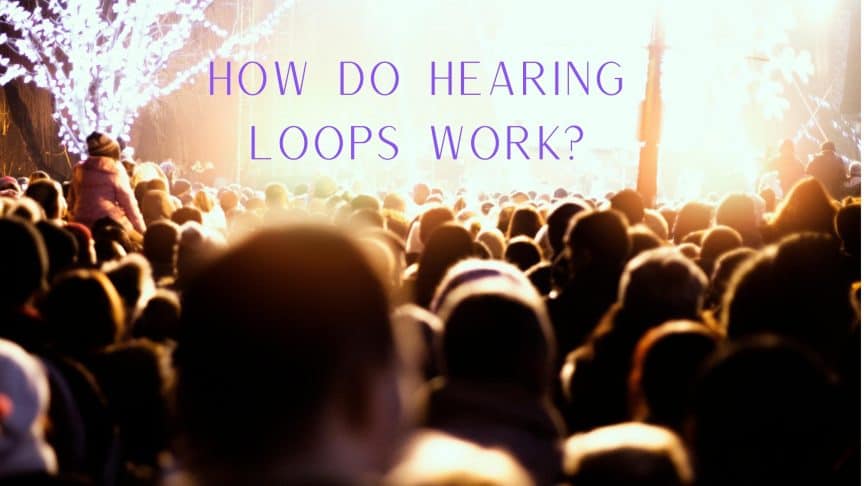- A Closer Look at Common Myths About Hearing Loss - May 7, 2024
- The Impact of Pets on Emotional and Hearing Health - April 26, 2024
- Strategies for Coping with Single-Sided Deafness - April 16, 2024
Are you ready to get your first pair of hearing aids, or thinking it’s soon time to upgrade your current devices? If you’re looking at new devices, there are a number of great programs and features you can get in your hearing aids. Along with the basics of noise reduction, speech enhancement, and feedback suppression, you can find more advanced features like connectivity settings, or programs that will automatically adjust your hearing aids settings. This is also a great time to consider hearing loops.
What are Hearing Loops?
You’ve probably heard people mention hearing loops before, but what are they? A hearing loop is a specially designed system that connects hearing aids to the sound system. Also called an induction loop, this program will wirelessly send the sound from the PA system right to a pair of hearing aids, or to a receiver with headphones. When you connect your hearing aids to the hearing loop, or put in the headphones attached to the receiver, you’ll hear all the sounds right in your ears!
Where Can You Find Hearing Loops?
Hearing loops are becoming more and more common. You’ll usually find hearing loops in large auditoriums, concert halls, or lecture theatres. Churches and other places of worship can also have hearing loops installed. Even public transit centers, like a large bus station or train terminal, often have hearing loops. Connecting to the hearing loop can help you easily hear the person speaking on stage, as well as hearing any announcements about a change in a train departure time.
How Does a Hearing Loop Actually Work?
To connect to a hearing loop, you’ll need to be wearing a pair of hearing aids that have a T-coil or telecoil. This is a small copper wire embedded in the hearing aids. If you’re in a building with a hearing loop, you can connect to the hearing loop just by activating the T-coil setting in your hearing aid.
The hearing loop sends a wireless signal from the PA system out across the auditorium or venue. Some venues have hearing loops that send signals throughout the entire space, while others send a signal to a particular area or set of seats. Once you activate the T-coil and your hearing aids are set to receive, they’ll pick up on all these signals, and you’ll be able to hear clearly.
How Well Do Hearing Loops Work?
You might be wondering if hearing loops actually work. When you have hearing aids with T-coils, it can completely change the way you attend religious services, see concerts, or go to events. Hearing loops can even change how you use public transit, since you’ll be able to hear what’s happening around you.
Another advantage of connecting to the hearing loop system is that it will block out more of the background sounds. You’ll hear the sounds from on stage right in your ears, and you won’t be distracted by the noises coming from the audience around you, such as people whispering.
Using a Hearing Loop
Using a hearing loop system is very easy. Call the venue you’re going to, and ask if they have a hearing loop. Request that they make sure it’s turned on and fully functional on the day you’re planning to attend. When you get to the venue, just activate the T-coil setting on your hearing aids. You’ll want to do this just before the show starts, so you can still chat with your friends. When you’re connected to the hearing loop, you’ll hear all the sounds right in your ears. You’ll be able to control the volume, and your hearing aids will even increase the clarity of the sound.
Get Hearing Aids with T-coils
Do you want hearing aids with T-coils? Not all hearing aids have this program, and some devices don’t have the copper wire that’s essential for picking up the signals from the hearing loop. When shopping for your new hearing aids, make sure you ask us about hearing aids with T-coils and narrow your options to devices that are fully compatible with hearing loop technology. Most styles of hearing aids can have a T-coil added, so you can also ask to get a T-coil included in your favorite hearing aids.

